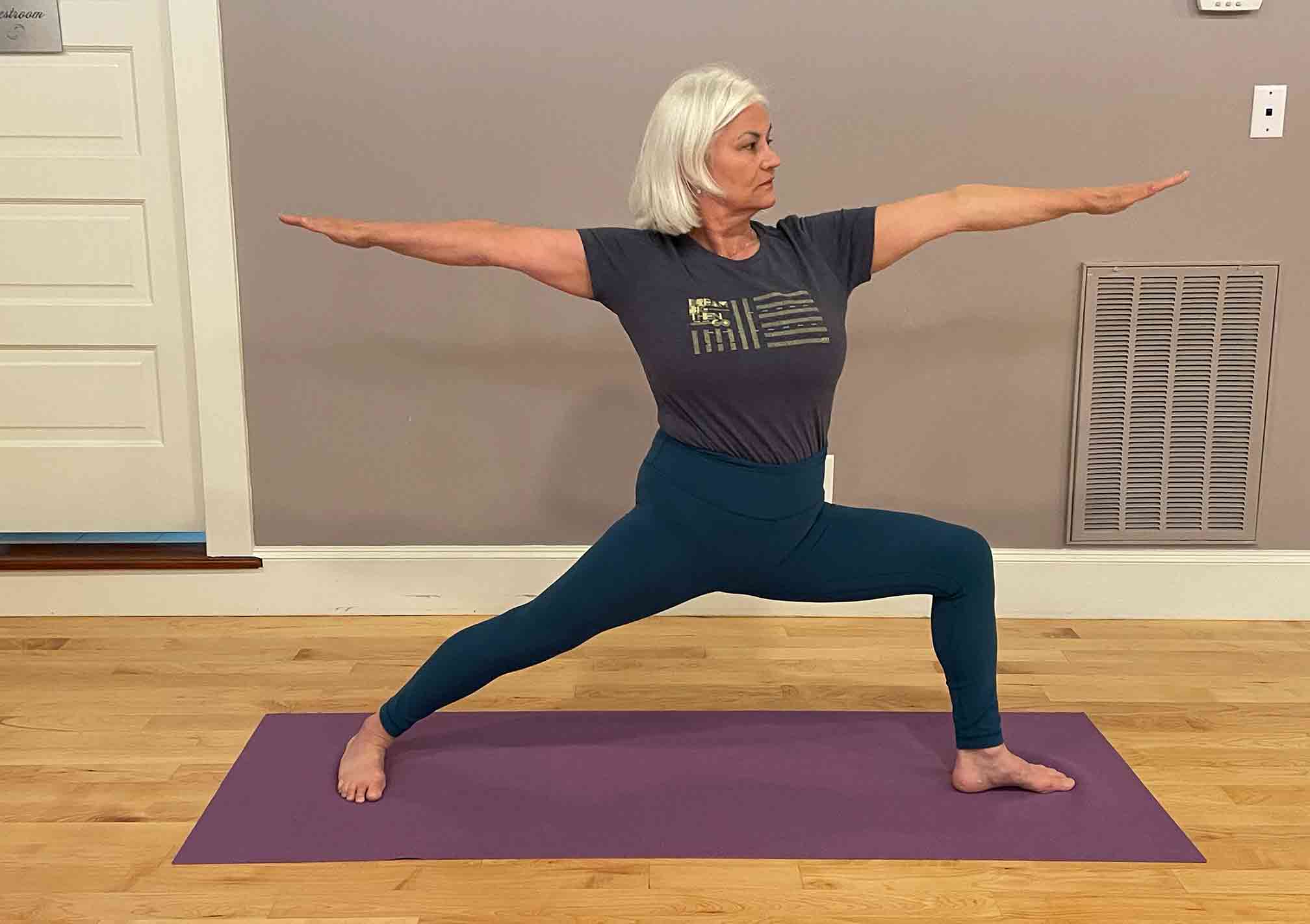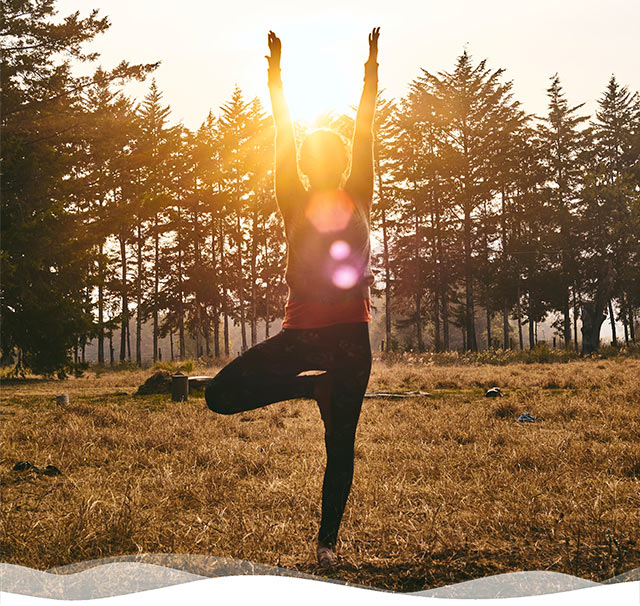Yoga has become mainstream in American culture. And so now, people everywhere are thinking, “I should do yoga.” And most young adults will be exposed to yoga in their gyms or at college. And older people too, think “I should do yoga,” but they don’t know where to begin or really understand what yoga is.
So I want to start this piece about what yoga really is, and then address the issue of starting when one is over 50.
First off, in India, it’s pronounced Yog (rhymes with Vogue). And the root of Yog is yuj, which means “to join.” In the classical yog text of India, Yog refers to a special state of mind that starts with one-pointed concentration and ends in complete absorption in the pure consciousness, called samadhi.
Another meaning yog is the means or methods of stilling the mind so that the state of samadhi can occur. Therefore yog is both a state of being and the means to achieve that state. The practice of yog is undertaken for the purpose of relieving suffering.
In the West the typical conception of yoga is exercise. This is incorrect and far too limited, as it concerns only the physical body. The purpose of YOG is to relieve and prevent human suffering. All of the means of yog, which include moral principles, personal observances, postures, energy / breath work, withdrawal from external sense objects, concentration, and meditation, are meant to relieve sorrow, depression, anxiety, disease, and existential suffering in general. The physical postures of yoga in the Indian tradition are a means of purifying the mind, so that contentment and peace result.
You cannot purify the mind if your body is sluggish, rigid, agitated, or diseased. You must work on the gross physical body before you can work on the intricacies and wild tendencies of the mind. That’s why postures are an important tool in the yogi’s kit. They lubricate joints, make the bones strong, improve muscle strength and suppleness. If done properly, the practice of asana can improve digestion, circulation, breathing, glandular function, and of course give a feeling of well-being, not dissimilar to the “runner’s high”. At the very least, the practice of postures will allow one to sit for meditation!
But you have to create a firm foundation, and this requires regular practice over many years, with a zeal for purification. The asanas are challenging, and you have to concentrate to do them right. If you go to a yoga class with a casual attitude, or the wrong attitude, you won’t be attentive enough to receive the teachings, practice them correctly, develop a habit, and lay the foundation that brings forth the benefits that I just mentioned. Yoga requires a degree of seriousness and a burning desire to change your life.
If you are a child or young adult, you can do movements from one posture to another, even jumping as your transition. Your joints are flexible, bones are growing, and muscles strong or ready to build up and heal easily if injured. If you’re basically healthy, you can join a class at a gym or a studio in which the instructor has minimal training, and follow the movements. At the very least you will get a “workout,” which is meets the expectations of ordinary people who have an image of commercial yoga in mind.
But a yoga practice is something else. We start with an invocation, a kind of prayer that recognizes the contributions of the sages in a lineage. This invocation often comprises mantras, or sacred syllables uttered for thousands of years, associated with God, divine beings, planets, the sun, or the moon. These mantras create a vibration of formality and auspiciousness that sets the tone for YOG. The mind becomes quiet and receptive, ready to hear the instructions of the teacher, who has received the teachings from her teacher, her teacher’s guru, her guru’s guru, and so forth.
Classical yoga is based on a traditional knowledge base, found in sacred texts and a lineage of practitioners. This is different from what I’ll call commercial yoga, which is based on making money by following trends.
We in Iyengar yoga stand on the shoulders of centuries of devoted practitioners who came before us. The invocation acknowledges this, like the citation of sources in a scholarly work; Everything we teach you has been handed down and refined for you in this moment. We didn’t follow a popular trend or make something up based on popular preferences. We also can’t take credit for the gift that we are about to pass on to you, as it was given to us.
The invocation also a kind of petitionary prayer. We invoke the tradition so that the spirits of those who came before us will be with us to assist us in the transmission of right knowledge in this particular practice. Geeta Iyengar often spoke of the cultivation of humility right before the invocation to Patanjali. “Humility is necessary to learn anything,” she would say. “And even I must be humble, to teach the right actions.”
As we become mature adults, the practice of asana must change for those of us who started in our twenties. If we jumped from a standing pose to an arm balance to a seated posture when we were in our twenties, we don’t any more. We go into postures more slowly and stay in them longer. We may begin with preparatory actions rather than attempt the classical posture first. And when we do get to the final posture, we refine it and learn to meditate in it, sometimes for 10 minutes.
And now we come to the issue of beginning yoga when one is a mature adult.
The first thing is that most places offer commercial yoga (not based on Indian tradition) and are not properly staffed or equipped to guide people over 50 years of age. It takes a special teacher with many years of personal practice, strong knowledge of classical postures, kinesiology, and common ailments, to see and guide the mature adult. Second, props are essential. Most commercial studios lack the proper equipment to provide the physical support that the mature adult needs.
At Alcove Yoga, we practice Iyengar Yoga. We undergo the most rigorous education and training available in the world. Our guru, the late B.K.S. Iyengar, and his daughter Geeta S. Iyengar, invented many prop usages and were revolutionary in making Yogasana accessible to all kinds of people with a vast array of challenges. These challenges can be related to stage of life, women’s reproductive stages and roles, diseases, or debilitating conditions.
At Alcove Yoga we offer a class for beginning students over 50 called 50+ Ignite! This is a 12 week series meant provide a solid foundation for asana practice for the mature, healthy adult.
Some of you will be very healthy, athletic, and active. You will breeze through this course learning the fundamental joint and muscle alignments in a few weeks. After the 12 weeks are finished we will encourage you to move into a “regular” Intermediate level class.
At the other end of the spectrum will be those of you who have ignored your body for the last several years. You may be stiff, somewhat sedentary, have aches and pains, or balance issues. Yes, you may register for this class, but only if you are capable of the following: walking, climbing stairs, lifting 10 pounds, and getting up and down from the floor unassisted.
If you are an older person, experienced in yoga, the appropriate class is “Ageless Asana,” or Intermediate level classes.
If you have questions about your condition and are interested in practicing yoga with us at Alcove Yoga, please feel free to reach out through the contact form. I’d give you the number but if I write it here, I’ll get all kinds of spam calls, so please understand the need for the contact form on the website.





